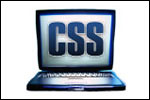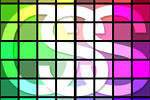Posts Tagged ‘code’
 All we know that there are three things to consider while creating a web page – content, form and function. CSS is in charge of the form of the web page if it is html-based. This article contains the review of the very basics of CSS, so that you get an idea of its functioning with modern web deign. Hope this time all the explanations will be clear for you.
All we know that there are three things to consider while creating a web page – content, form and function. CSS is in charge of the form of the web page if it is html-based. This article contains the review of the very basics of CSS, so that you get an idea of its functioning with modern web deign. Hope this time all the explanations will be clear for you.
Continue Reading...
Next post
Previous post
 To make some element transparent you can use the css3 property opacity. This css3 property provides you with decent cross-browser support. This property accepts a value between 0 and 1 with 0 – totally transparent and 1 – no transparency at all. As usual, none of the IE browsers accept this property.
To make some element transparent you can use the css3 property opacity. This css3 property provides you with decent cross-browser support. This property accepts a value between 0 and 1 with 0 – totally transparent and 1 – no transparency at all. As usual, none of the IE browsers accept this property.
Continue Reading...
Next post
Previous post
 CSS is all about cascading or waterfall principle. You may know this principle, but still some ways CSS is constructed are obscure. So, let’s try to find out the specificity of CSS selectors that are abased on the struggle for dominance principle. First of all, we should interpret the concept of CSS specificity…
CSS is all about cascading or waterfall principle. You may know this principle, but still some ways CSS is constructed are obscure. So, let’s try to find out the specificity of CSS selectors that are abased on the struggle for dominance principle. First of all, we should interpret the concept of CSS specificity…
Continue Reading...
Next post
Previous post
 We have already discussed CSS selectors that could be used without worrying about browser support in our previous articles. Now we are going to talk about the selectors that can quite useful in some browsers, but fail to work cross-browser. If you are going to style document, the selectors explained can help you a lot.
We have already discussed CSS selectors that could be used without worrying about browser support in our previous articles. Now we are going to talk about the selectors that can quite useful in some browsers, but fail to work cross-browser. If you are going to style document, the selectors explained can help you a lot.
Continue Reading...
Next post
Previous post
 It is not so hard to write rules for a specific document, the other thing is to write CSS for entire site. It is advisable to verify that when a context is defined, it is necessary for an element to appear within that context to receive its defined style. In css, pattern matching rules determine which style rules apply to elements in the document tree.
It is not so hard to write rules for a specific document, the other thing is to write CSS for entire site. It is advisable to verify that when a context is defined, it is necessary for an element to appear within that context to receive its defined style. In css, pattern matching rules determine which style rules apply to elements in the document tree.
Continue Reading...
Next post
Previous post
 It is desirable that browser specific bugs should be targeted and fixed each browser specifically with no impact on the way general CSS is written. If a bug is fixed in a certain browser version, we need a possibility to remove fixes without worrying about browser compatibility.
It is desirable that browser specific bugs should be targeted and fixed each browser specifically with no impact on the way general CSS is written. If a bug is fixed in a certain browser version, we need a possibility to remove fixes without worrying about browser compatibility.
Continue Reading...
Next post
Previous post
 Classes help you to structure your document as well as add semantic meaning to elements where html falls short. It is better not to apply too many classes on one single element and avoid classes that contain behavior instead of semantic meaning. In case you use the class attributes correctly, you will get flexible and future proof structure to your documents.
Classes help you to structure your document as well as add semantic meaning to elements where html falls short. It is better not to apply too many classes on one single element and avoid classes that contain behavior instead of semantic meaning. In case you use the class attributes correctly, you will get flexible and future proof structure to your documents.
Continue Reading...
Next post
Previous post
 Trying to be a professional web designer we try to learn everything necessary about web standards and even more. Now you know a lot about screen readers and people with disabilities browsing the web, how machines differ from humans as well as about semantics and syntax. All this is quite useful.
Trying to be a professional web designer we try to learn everything necessary about web standards and even more. Now you know a lot about screen readers and people with disabilities browsing the web, how machines differ from humans as well as about semantics and syntax. All this is quite useful.
Continue Reading...
Next post
Previous post
 At-rules are instructions or directives to the CSS and can be used for a variety of purposes. There are quite a lot of facets specific to the page at-rule. However, many at-rules don’t work on any browser, so we offer you the basic information concerning at-rules that help you to get the idea without wasting your time on reading a lot of stuff.
At-rules are instructions or directives to the CSS and can be used for a variety of purposes. There are quite a lot of facets specific to the page at-rule. However, many at-rules don’t work on any browser, so we offer you the basic information concerning at-rules that help you to get the idea without wasting your time on reading a lot of stuff.
Continue Reading...
Next post
Previous post
 Here you can find some general information about position and floating. The main issue of this article is the larger chunks of a page. However, you can represent any web design with the right combination of positioning, floating, margins, padding and borders. Just look at each part of the page as individual chunk.
Here you can find some general information about position and floating. The main issue of this article is the larger chunks of a page. However, you can represent any web design with the right combination of positioning, floating, margins, padding and borders. Just look at each part of the page as individual chunk.
Continue Reading...
Next post
Previous post
 All we know that there are three things to consider while creating a web page – content, form and function. CSS is in charge of the form of the web page if it is html-based. This article contains the review of the very basics of CSS, so that you get an idea of its functioning with modern web deign. Hope this time all the explanations will be clear for you.
All we know that there are three things to consider while creating a web page – content, form and function. CSS is in charge of the form of the web page if it is html-based. This article contains the review of the very basics of CSS, so that you get an idea of its functioning with modern web deign. Hope this time all the explanations will be clear for you.







